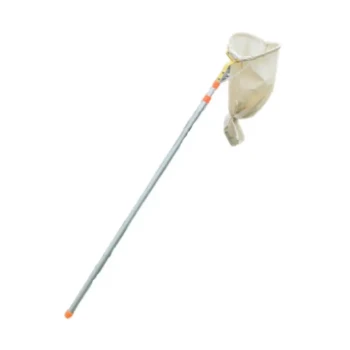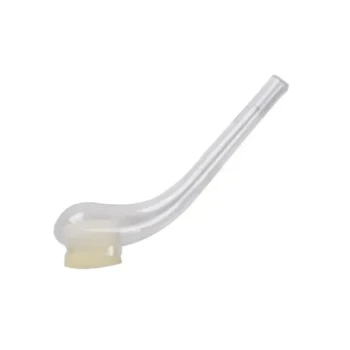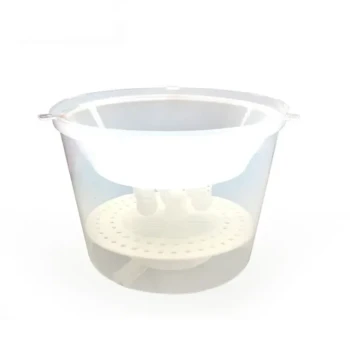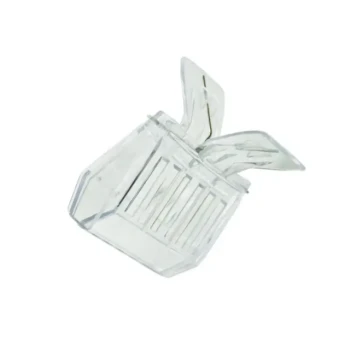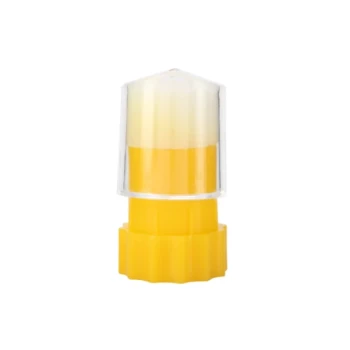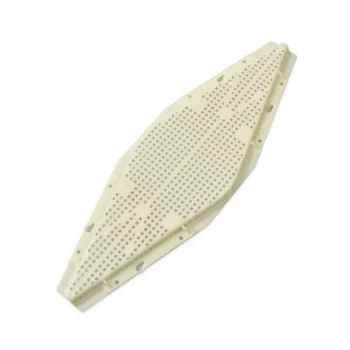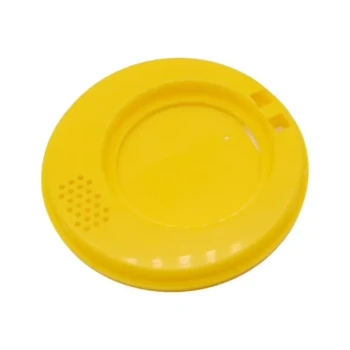For commercial beekeepers, swarm prevention is not a single action but a systematic process of hive management. They primarily control the swarming impulse by manipulating hive space to prevent congestion in the brood-rearing area of the colony. This proactive management is critical for maintaining a maximum strength workforce for pollination or honey production, as a swarmed colony represents a significant loss of productivity.
The core principle of commercial swarm control is to proactively manage the biological triggers for swarming—primarily brood nest congestion. By consistently creating space and disrupting the colony's sense of being "full," operators convince the hive that it has not yet reached the peak conditions required to divide.
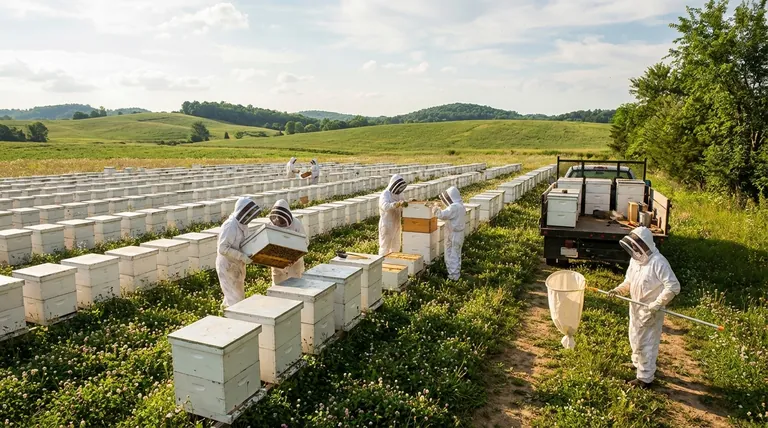
The 'Why' Behind Swarming: Understanding the Triggers
To prevent swarming, you must first understand why it happens. Swarming is not a problem; it is the colony's natural and successful method of reproduction. It's triggered by a specific set of conditions that signal the hive is strong, healthy, and ready to divide.
The Primary Trigger: Brood Nest Congestion
A colony's "brood nest" is the central area where the queen lays eggs and young bees are raised.
When this area becomes overcrowded with bees, brood, pollen, and nectar, it sends the strongest signal to swarm. The nurse bees no longer have cells to prepare for the queen, and the queen has nowhere to lay.
This congestion also impedes the circulation of the Queen Mandibular Pheromone (QMP), a chemical signal that suppresses the workers' instinct to raise new queens. When bees in the far corners of the hive don't sense the queen's pheromones, they assume she is failing and begin swarm preparations.
The Secondary Trigger: An Aging Queen
A queen's QMP output naturally declines as she ages, typically after her second year.
Even in a hive with adequate space, a weakening pheromone signal can convince the colony it is time to raise a successor and swarm with the old queen.
The Final Factor: Abundant Resources
Swarming is a resource-intensive gamble. A colony will only initiate the process if it has a large population of young bees and a strong income of nectar and pollen.
This combination of a crowded home and a full pantry tells the bees they are prosperous enough to afford dividing their workforce and resources.
Proactive Management Techniques Used by Professionals
Commercial beekeepers cannot inspect every hive for swarm cells every week. Instead, they use systematic, apiary-wide techniques to disrupt the swarm triggers before they take hold.
Reversing Hive Bodies
This is a fundamental technique for beekeepers who use two deep boxes for their brood chamber, and it directly addresses the information in the reference.
Bees naturally move upward throughout the winter and spring, filling the top box with brood and honey. By early spring, the top box is often congested while the bottom box is nearly empty.
Reversing involves simply stacking the now-empty bottom box on top of the congested top box. This immediately provides the queen with fresh, empty comb to lay in right where the colony wants to expand—upward. It instantly relieves brood nest congestion.
Providing Adequate Super Space
"Supering" is the act of adding boxes for honey storage above the brood chamber.
Giving bees ample space for incoming nectar prevents them from storing it in the brood nest. This is crucial because "backfilling" the brood nest with nectar is a powerful swarm trigger, as it restricts the queen's laying space.
Equalizing Colonies
A key practice in large-scale operations is equalization. Beekeepers will take frames of sealed brood from their strongest, most populous colonies (those most likely to swarm) and give them to their weakest colonies.
This accomplishes two goals simultaneously: it boosts the population of weaker hives, making them productive, and it bleeds off the excess population from the strongest hives, relieving congestion and reducing their swarming impulse.
Making Splits (Artificial Swarming)
The most definitive way to prevent a colony from swarming is to do it for them. Splitting a hive involves removing the queen and several frames of brood, bees, and resources to create a new, smaller colony (a "nucleus" or "nuc").
The original colony, now queenless and with a reduced population, must focus its energy on raising a new queen, which completely resets the swarming impulse. This is a common method for both swarm control and increasing the total number of hives.
Understanding the Trade-offs
While these techniques are effective, they come with operational costs and require careful timing. There is no "set it and forget it" solution.
Labor and Time Intensity
Every one of these techniques requires physically opening and manipulating hives. Across hundreds or thousands of colonies, this represents a significant investment in labor and time. Efficiency is paramount.
Short-Term Impact on Productivity
Splitting a powerful hive in half just before the main honey flow will reduce the potential honey crop from that single source. However, the commercial calculation is that a reduced yield from two hives is far better than a total loss of the workforce from one hive that swarms.
It Is Management, Not Elimination
Even with perfect management, some colonies may still attempt to swarm, especially those with genetics predisposed to it. These methods dramatically reduce the probability of swarming across an operation but cannot eliminate the instinct entirely.
Making the Right Choice for Your Goal
The best swarm management strategy depends entirely on your objectives as a beekeeper.
- If your primary focus is maximizing honey production from existing hives: Use reversing and timely supering to keep the colony population unified and focused on foraging.
- If your primary focus is increasing your total number of colonies: Use proactive splits on your strongest hives as your main swarm control method.
- If your primary focus is pollination services: Use a combination of equalization and splitting to maintain a large number of strong, stable colonies of a consistent size.
- If your primary focus is low-intervention beekeeping: Focus on giving colonies abundant space well ahead of need and consider requeening annually with stock known for low swarm tendencies.
Ultimately, effective swarm control is about working with the bees' biology, not against it, to achieve a predictable and productive outcome.
Summary Table:
| Technique | Primary Action | Key Benefit |
|---|---|---|
| Reversing Hive Bodies | Swap positions of brood boxes | Instantly relieves brood nest congestion |
| Providing Adequate Super Space | Add honey storage boxes above brood chamber | Prevents nectar backfilling in brood nest |
| Equalizing Colonies | Transfer brood frames from strong to weak hives | Balances hive strength and reduces swarming impulse |
| Making Splits (Artificial Swarming) | Divide strong colonies to create new hives | Completely resets swarming impulse while increasing colony count |
Maximize your apiary's productivity with professional-grade equipment from HONESTBEE.
Swarm prevention requires efficient hive management, and having the right tools is essential for success. Whether you're a commercial apiary focused on pollination services or a beekeeping equipment distributor serving the industry, HONESTBEE provides wholesale-focused supplies designed for large-scale operations.
We help you:
- Scale operations efficiently with durable hive components and handling equipment
- Reduce labor intensity with time-saving tools for reversing, supering, and splitting
- Maintain colony health with reliable protective gear and feeding systems
Ready to optimize your swarm management strategy? Contact our expert team today to discuss wholesale pricing and equipment solutions tailored to your commercial needs.
Visual Guide
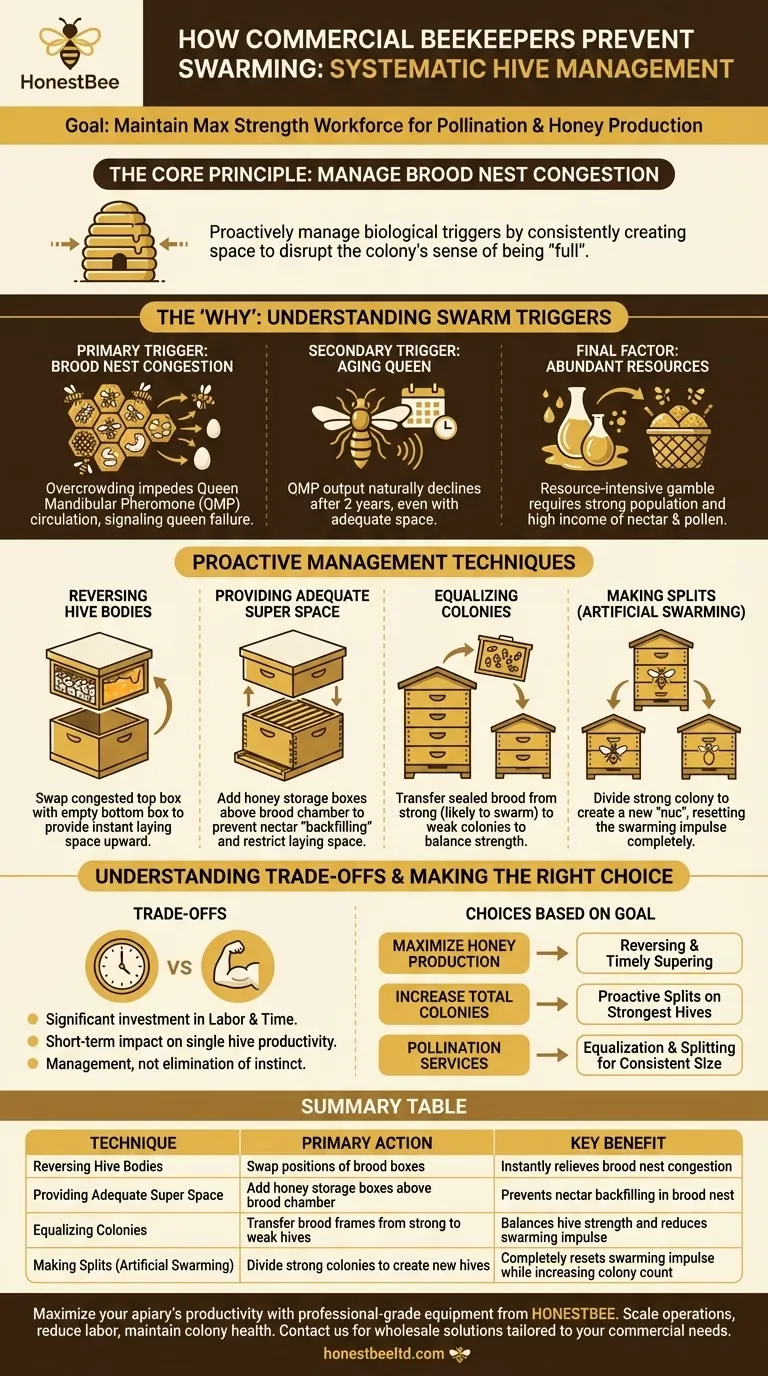
Related Products
- HONESTBEE Professional Telescopic Pole Bee Swarm Catcher
- Plastic Bee Pollen Trap Strips Comb Catcher Collector
- HONESTBEE Advanced Ergonomic Stainless Steel Hive Tool for Beekeeping
- Black Plastic Beetle Barn Hive Beetle Trap for Beehives
- 30 cm Plastic Entrance Hole Bee Pollen Trap and Collector
People Also Ask
- What precautions can be taken to prevent a newly captured swarm from absconding? Secure Your Swarm with Proven Methods
- Do honey bees leave their hives? Understanding the Critical Role of Swarming
- How can walk-away splits help in swarm prevention? A Proactive Strategy for Beekeepers
- How do beekeepers catch bees? Master Swarm Capture for Apiary Success
- What are the three main ways to obtain honeybees? Choose the Best Path for Your Apiary
